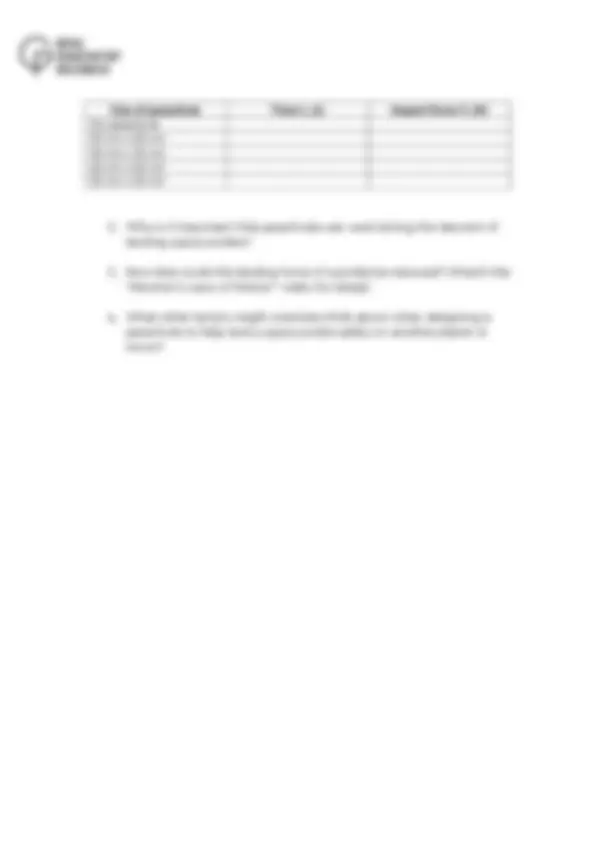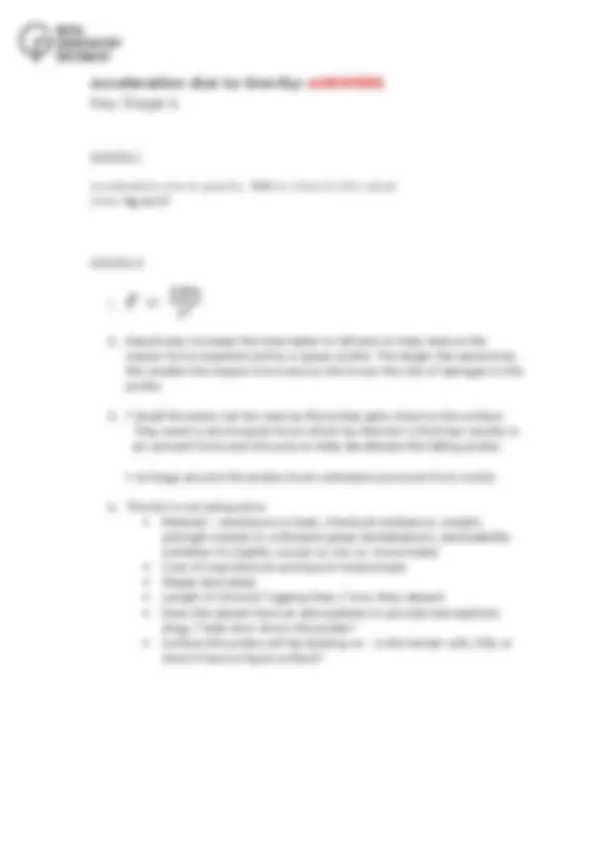





Study with the several resources on Docsity

Earn points by helping other students or get them with a premium plan


Prepare for your exams
Study with the several resources on Docsity

Earn points to download
Earn points by helping other students or get them with a premium plan
Community
Ask the community for help and clear up your study doubts
Discover the best universities in your country according to Docsity users
Free resources
Download our free guides on studying techniques, anxiety management strategies, and thesis advice from Docsity tutors
Instructions for Key Stage 4 students to estimate the acceleration due to gravity on Earth through experiments and calculating the impact force on a marble using parachutes of different sizes. Students are encouraged to explore the effects of gravity on objects and the importance of reducing impact forces during the descent of space probes.
What you will learn
Typology: Study notes
1 / 5

This page cannot be seen from the preview
Don't miss anything!




Topics covered: force, mass, acceleration, gravitational field strength, impact forces.
Watch the video “Newton’s Laws of Motion”, https://vimeo.com/
Your weight is a force, F (N), caused by the effect of gravity. It depends on your mass, m (kg), but also on the acceleration, a (m/s^2 ), due to the gravity of the object that is pulling you towards it.
We can estimate the acceleration due to the gravity on the surface of the Earth using mechanics. If we ignore the effects of atmospheric drag and measure the time, t (s), for an object to fall from a height, d (m), then the acceleration due to the Earth’s gravity can be calculated using the equation below:
Activity 1 - Calculating the acceleration due to gravity on Earth
Equipment : marble, 2 metre rulers + blue-tack, balance and stop clock
a) Measure the mass of the marble using the balance and record the result. Mass = ___________ kg
b) Stick the rulers vertically against a flat wall with one touching the ground and the other directly above it.
c) Choose 5 different heights to drop your marble from and time how long it takes to reach the ground. Fill in the table below as you collect your results. You may want to repeat and average your results if you have time.
Height, d (m) Time, t (s) 2d (m) t^2 (s^2 )
d) Plot a graph of 2d against t^2 and draw a line of best fit through your results.
e) Calculate the gradient of this line (equation 2) which will give you the acceleration due to the gravity of the Earth at its surface.
Calculated acceleration due to gravity _________________ units: _______
Extension
Because the Earth is not a perfect sphere (it bulges out more at the equator), the acceleration due to gravity is slightly less at the equator compared to the poles. Find your latitude by visiting: http://www.sensorsone.com/local- gravity-calculator/#latitude to see how close your calculated value is to your local acceleration due to gravity.
Size of parachute Time t, (s) Impact force F, (N) No parachute 20 cm x 20 cm 3 0 cm x 3 0 cm 4 0 cm x 4 0 cm 5 0 cm x 5 0 cm
Activity 1
Acceleration due to gravity: 9.8 (or close to this value) Units: kg m/s^2
Activity 2
Air bags around the probe (must withstand puncture from rocks).